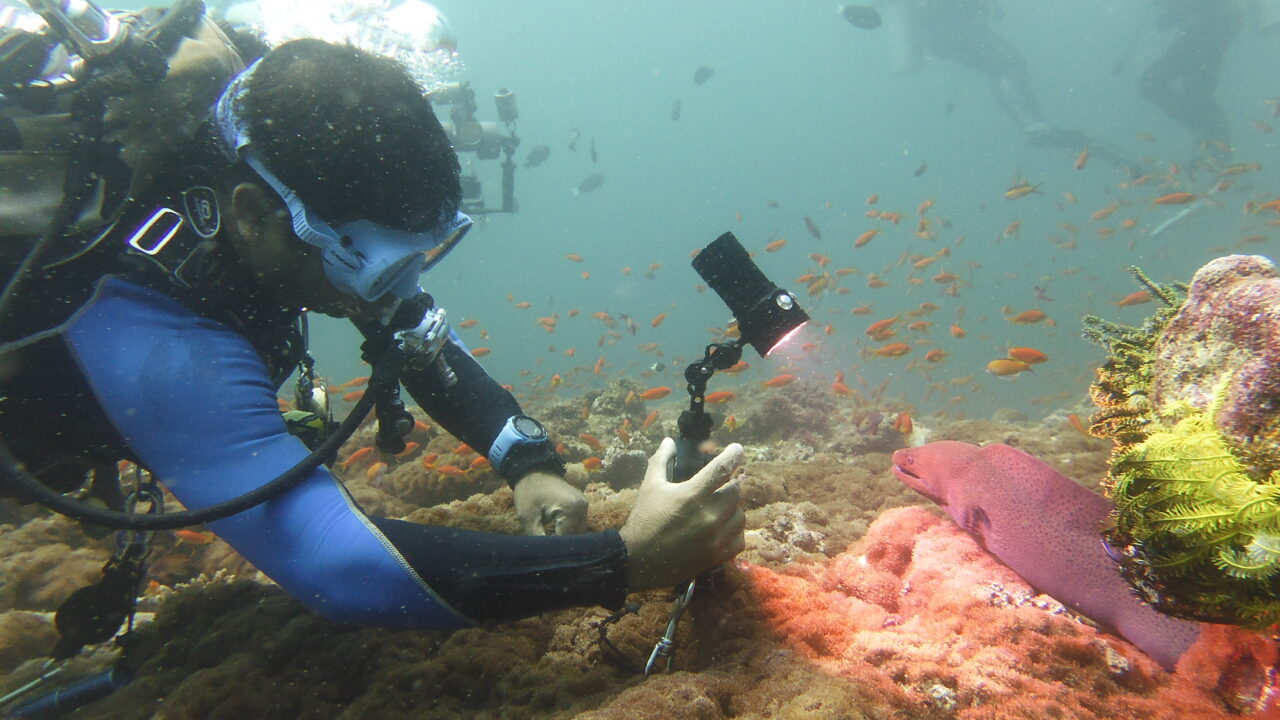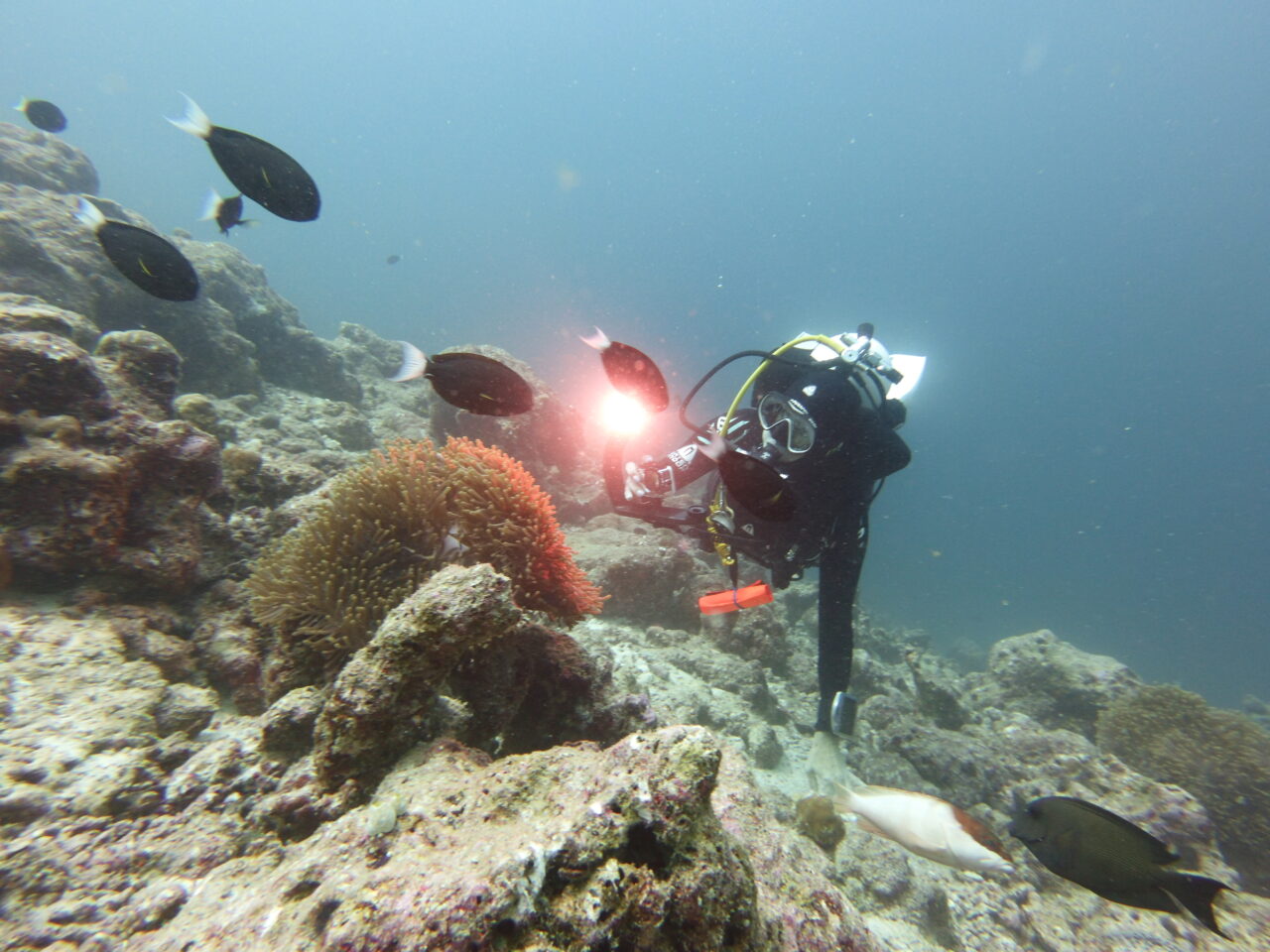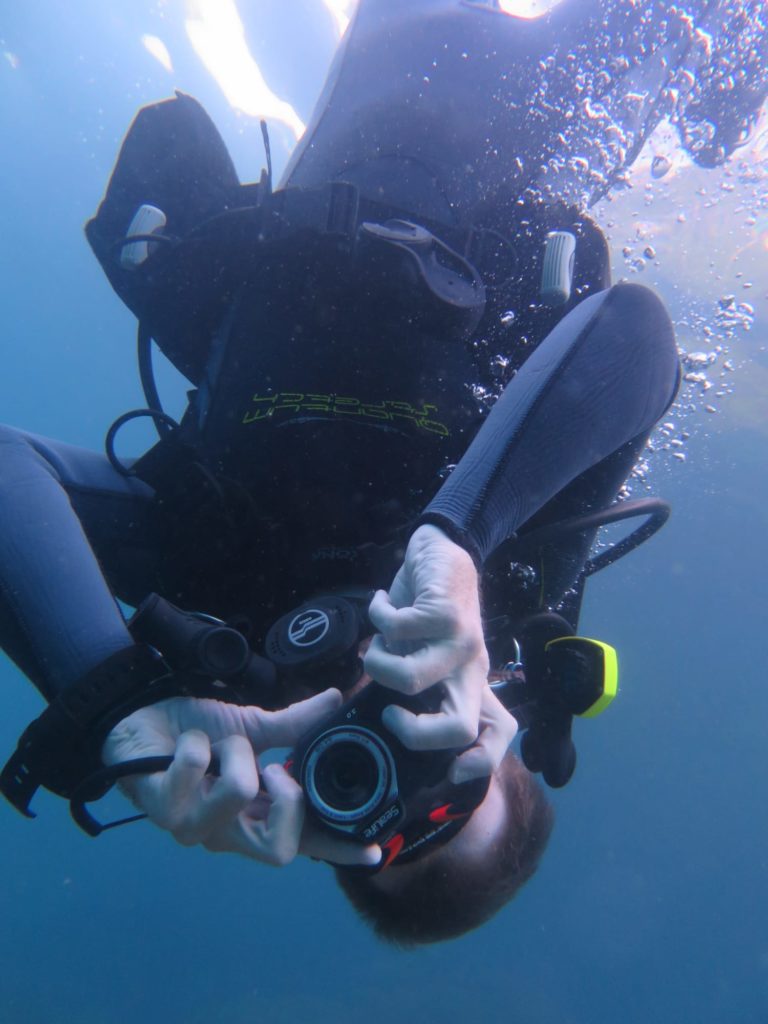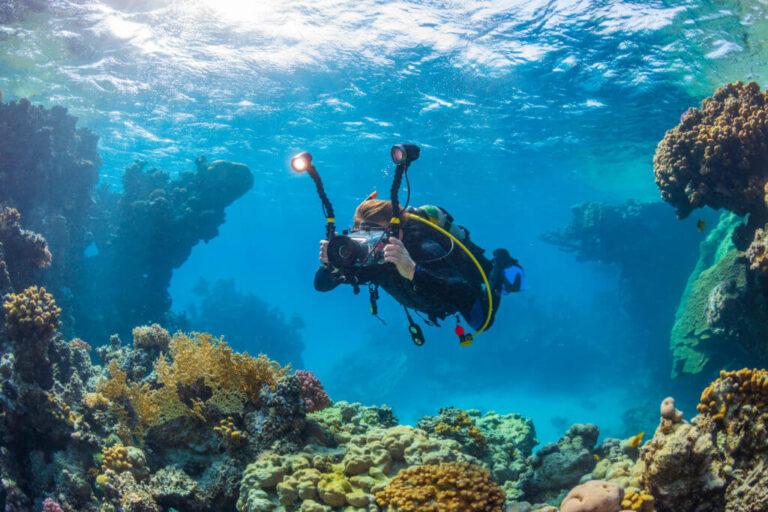
Not all underwater cameras are the same! Some are more suited to taking photos…whereas others excel at shooting video.
The best waterproof video cameras are those with high frame rates (30 – 60 fps or more), high resolution (4K or more) and underwater colour correction (automatic white balance).
Furthermore, some underwater video cameras are designed for beginners with simple user-interfaces whereas others have been made for pros; with highly customisable settings.
A few have special features such as slow-motion, time-lapse and macro-mode (for filming tiny subjects like shrimp etc).
Most modern video cameras also feature video stabilizaiton (aka in-body image stabilization or IBIS) which uses AI to counter the effect of shaky hands. IBIS quality varies a lot between cameras.
In this epic guide of awesomeness we’ve reviewed the best underwater video cameras of 2024 with real-life user feedback, pros, cons, specs and more.
QUICK LOOK
- TOP PICK: Sony Alpha a7S III
- Best 8K Underwater Video Camera: Canon EOS R5
- Best DSLR Camera for Underwater Video: Canon EOS-1D Mark III
- Best Micro Four-Thirds Underwater Video Camera: Panasonic Lumix GH5
- Best All-Rounder UW Video Camera for Beginners: Sealife Micro 3.0
- Best Underwater Camera for Macro Videos: Olympus Tough TG-7
- Best Action Camera for Underwater Video: GoPro Hero 11
- 8. Cheapest Underwater Camera: Akaso EK7000
EPIC REVIEWS:
1) TOP PICK: Sony Alpha a7S III
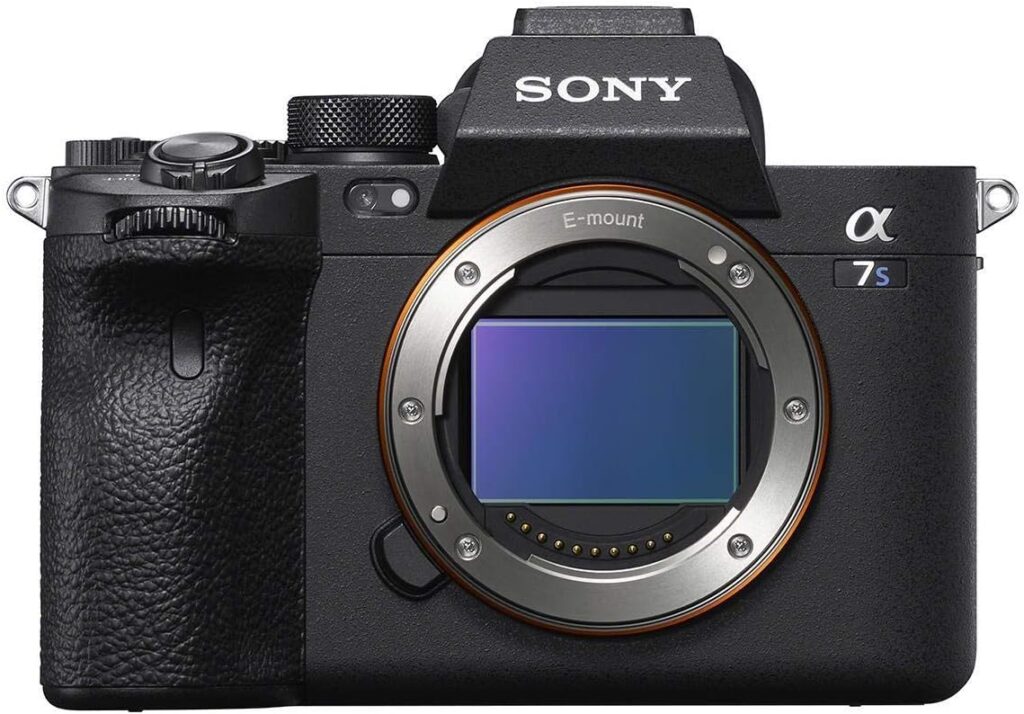
- Price: > $$$
- 12.1MP Exmor R Sensor
- Bioz XR Image Processor
- “Low Base” and “High Base” ISO capability
- Up to 4K 120 fps 10 bit 4:2:2
- 5-Axis Video Stabilization
- AF tracking with human and animal eye AF capability
In my opinion, the Sony Alpha a7S III is the best underwater video camera thanks to it’s awesome low light capabilities; it can easily capture high-definition video footage past ISO 12,800; making it ideal for the low levels of light found when diving at depths beyond 33 feet / 10 meters.
Expensive though it may be; the quality of video footage that it produces is incredible: it records video at up to 4K at 120 fps with 10 bit 4:2:2 internal recording resulting in high definition clips with incredibly detailed and vivid colour. The 5-Axis in-built body stabilization is of very high quality and seamlessly counters any hand shake.
Another really cool thing about it is the autofocus options: with animal eye AF and AF tracking which allows you to lock onto and track moving animals (or divers!).
It has a full-frame CMOS sensor of 12.1 MP; whereas this might be a bit small for a photography camera; you actually want a video camera to have a small image sensor because it keeps each pixel larger and collects more light.
Effective internal heat dissipation means you can record 4K 60fps video clips for over an hour without any risk of overheating. Expensive though it and it’s separately purchased underwater housing options may be, the Sony Alpha a7S III is a serious underwater video camera that will not disappoint serious underwater videographers.
2) Best 8K Underwater Video Camera: Canon EOS R5
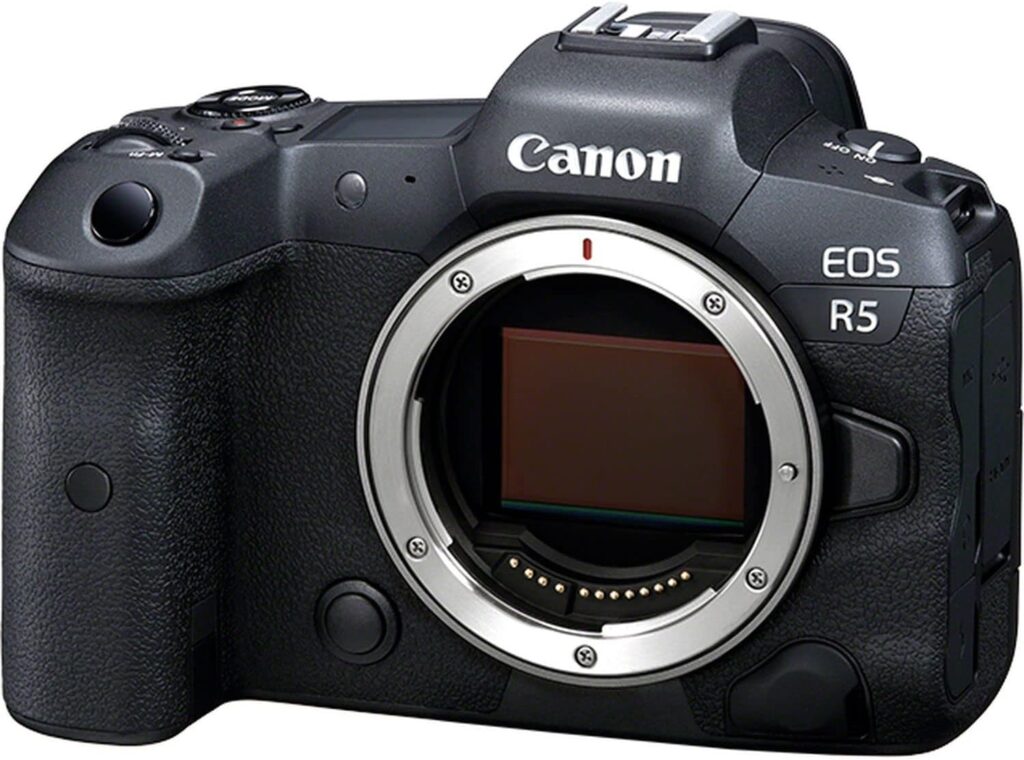
- Price: > $$$
- Records 8K Video / 30 fps as well as 4K / 120 fps
- 45 megapixel full-frame CMOS Sensor
- DIGIC X Image Processor
- ISO Range: 100 – 51200
- Superb in-body image stabilization
- Tracks fish-eyes
- Records RAW video internally
3) Best DSLR Camera for Underwater Video: Canon EOS-1D X Mark III
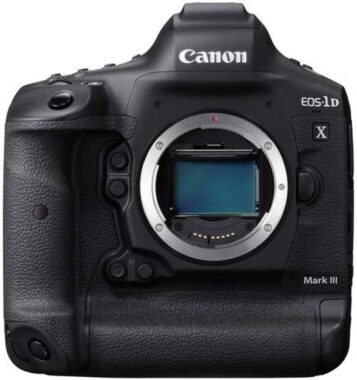
- Price: > $$$
- DSLR Camera
- 20.1 MP Full-Frame CMOS Sensor
- Compact, Lightweight & Streamlined
- 5.3 K Video at 60 fps
- True Raw Capabilities
- DIGIC X Processor
- ISO Range: 100 – 104200
- 3.2″ 2.1 million dots LCD
4) Best Micro Four-Thirds Camera for Underwater Video: Panasonic Lumix GH5S
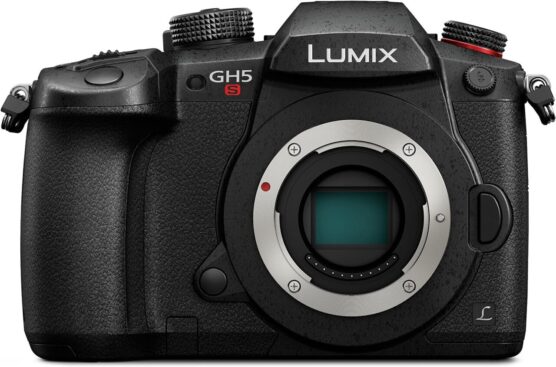
- Price: > $$
- Compact & Lightweight
- Interchangeable Lens
- Cinema 4K at 60fps
- 10.2 MP Multi-Aspect Sensor
- 5-Axis in-body video stabilization
A mirrorless four-thirds camera is a mirrorless interchangeable-lens camera system that was initially developed by Olympus and Panasonic in 2008. It combines an awesome balance of compactness, affordability and high image quality.
Notably cheaper, lighter and smaller than the other cameras we’ve so far reviewed, the Panasonic Lumix GH5S has been developed especially for shooting video which it can capture at 4K 60 fps in Cinema 4K.
It uses a 10.2 MP multi-aspect sensor allowing it to shoot in 4K DCI (17:9), Ultra HD (16:9) and Anamorphic 4:3 Aspect ratios. Having a small sensor size also means it performs well in low light levels; which is ideal for when you’re diving deeper than 33 ft / 10 m.
Although the overall video resolution isn’t as good as that of the more expensive underwater cameras we’ve so far reviewed; the Panasonic Lumix GH5S serves as an excellent intermediate underwater video camera and a great stepping stone between beginner level cameras and more professional models.
5) Best All-Rounder for Beginners: Sealife Micro 3.0
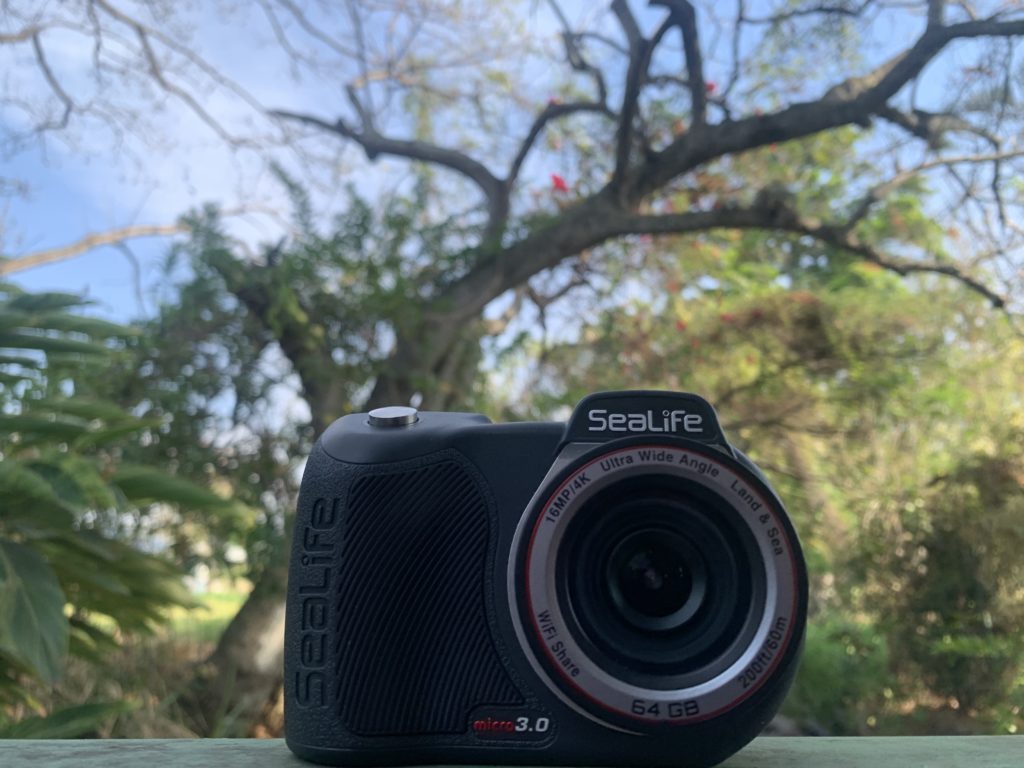
- Price: > $$
- Easy to Use
- Durable & Compact
- Underwater Colour Correction
- Waterproof to 200ft / 60m without any Housing
- 4K / 30 fps Video
- Decent Video Stabilization
Now, we’re going to massively lower the price bar as we look at several much cheaper and simpler underwater cameras. The first is one that’s been designed especially for recreational divers wanting to get into recording their underwater explorations: the Sealife Micro 3.0.
Whilst not designed for professionals; the Micro 3.0 is also not the all-time cheapest underwater camera; compared to other budget underwater cameras, it is superior in terms of video quality and diver-friendly features.
It features underwater colour correction with 3 modes: shallow, deep and green; this automatically adjusts white balance to give vivid and realistic underwater colours with none of the blue hue associated with underwater video for which the white balance hasn’t been adjusted.
It also features very decent video stabilization and among the wide range of separately purchased accessories for it including macro lenses and video lights, there is also a tray mount which makes it even easier to maintain smooth footage. With an image sensor of 16mp it also takes very nice novice-level photos.
With an extremely simple user-interface; the Micro 3.0 is permanently sealed within it’s waterproof housing and can be taken to 200 ft / 60 m. This is very useful for beginners as not having to take it in and out of underwater housing eliminates any risk of flooding.
6) Best Underwater Macro Camera for Beginners: Olympus Tough TG-7
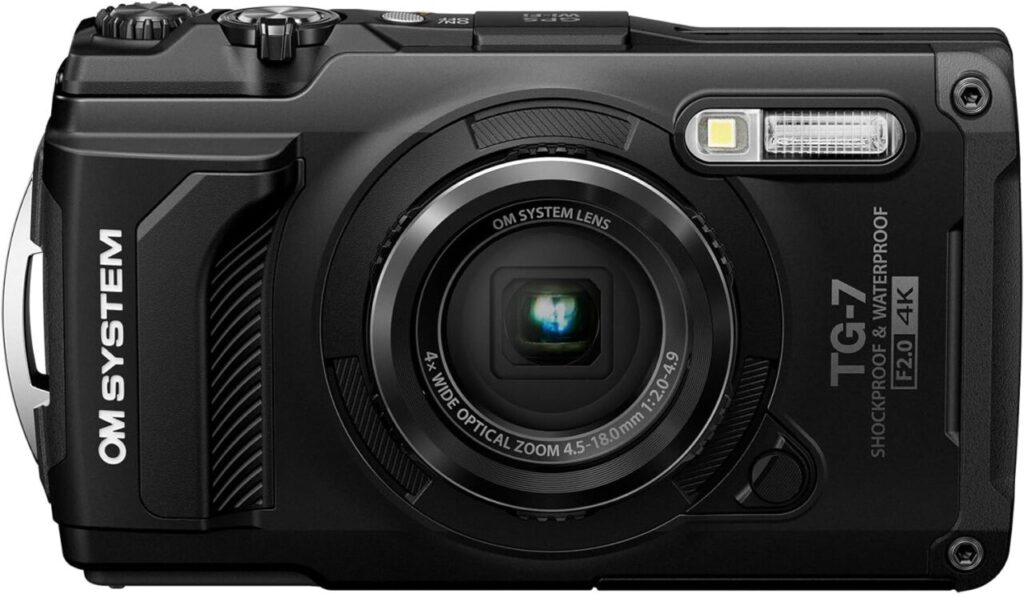
- Focus range: 3 inches – infinity
- Macro Mode
- 4X Optical Zoom
- 4K Video at 30fps
- Video Stabilization
- White Balance Mode
- RAW support
The Olympus Tough TG-7 is the best underwater camera for macro videos (that is of tiny subjects like shrimp) for beginners. This is because despite how affordable and easy to use it is; it’s the only camera of it’ price range to include features especially for macro.
It has a dedicated macro and microscope mode which let’s you get as close to subjects as 0.39 inches which can then be combined with the 4X optical zoom to let you get as close as 0.13 inches for incredible close-up shots of tiny critters!
At the same time, it can also shoot to infinity for those wide angle shots. With a 12 mp sensor that handles low-light well and filming at 4K / 30 fps; the Olympus Tough TG-7 is a rugged and compact underwater camera.
its underwater housing, and it’s separately purchased underwater housing.
The image stabilization is good and corrects lens shake to produce smooth and seamless video footage, whilst the RAW support increases image quality and also provides the ability to easily correct photos that would otherwise be hard to fix. There is also a white balance mode for underwater colour correction.
7) Best Action Camera for UW Video: GoPro Hero 11
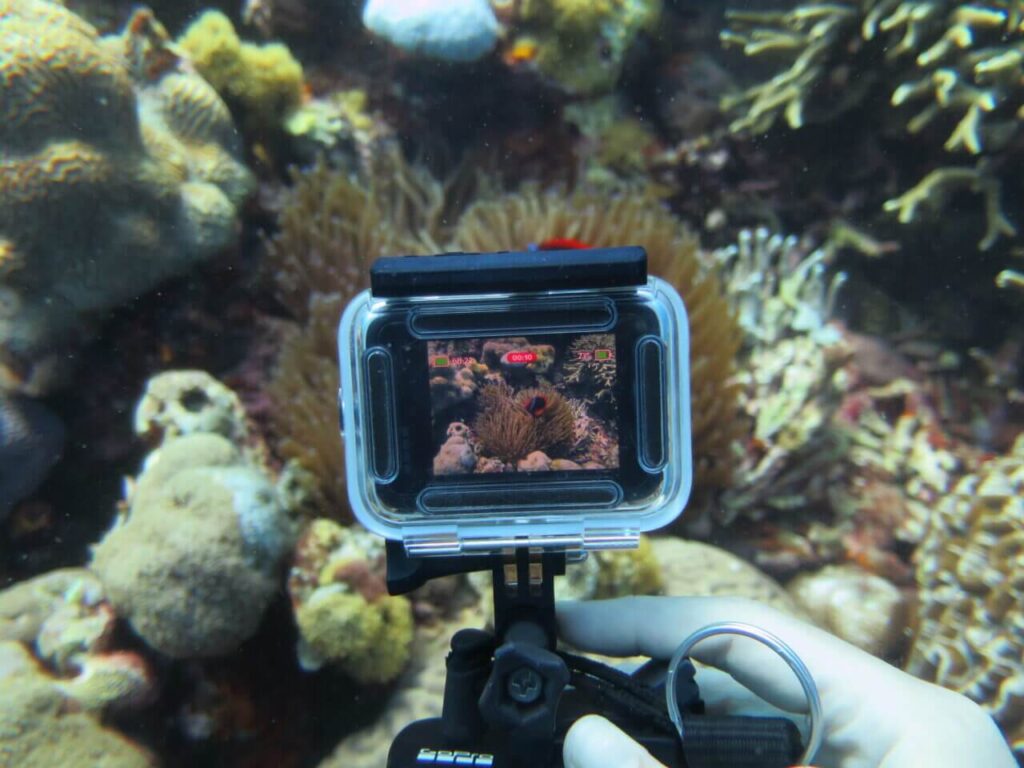
- 5.3K / 60fps Video
- 27 MP stills
- HyperSmooth 5.0 Video Stabilization
- Manual White Balance & ISO Setup
- 200ft / 60m waterproof with separately purchased underwater housing
Action cameras are small digital cameras used for sports like such as skating, biking and scuba diving! To be used underwater they must be placed in a waterproof housing.
Of all the action cameras out there, the GoPro range are the most popular and sophisticated: in fact; a GoPro is the most common type of underwater camera you’ll see being used by recreational scuba divers. One of the newest models is the GoPro Hero 11.
The Hero 11, shoots awesome video at 5.3 K / 60 fps which is seriously impressive for such a small and cheap camera! It also snaps very detailed images with its 27 mp image sensor. On top of this, it has the best video stabilisation of any underwater action camera on the market, period!
For underwater colour correction you can buy a red-filter that is easily placed over the lens – or manually adjust the white balance and ISO settings above water and store these setups as custom presets, accessible underwater.
Affordable, easy-to-use and shockingly good value fro money, it’s easy to see why the GoPro Hero 11 is so popular.
(We have a main article on the best underwater action cameras).
8) Cheapest Underwater Camera: Akaso EK7000
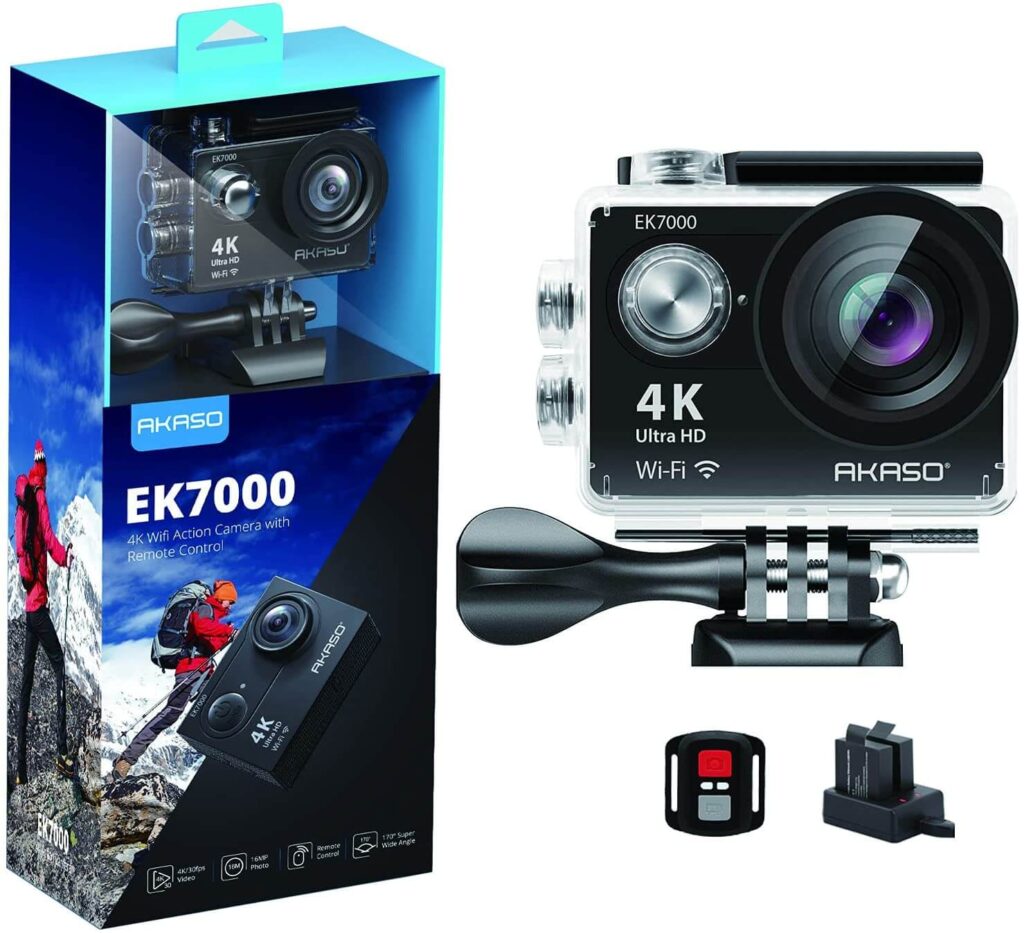
- Cheapest Underwater Camera available
- Waterproof to 98ft / 30m with included underwater housing
- 4K/30fps Video
- 16mp photo resolution
- Basic electronic stabilisation
- Time lapse and loop recording modes
- 170 degree wide angle lens
This is it: the cheapest underwater video camera on our list! Another action cam, the Akaso EK7000 is surprisingly decent for something that costs well under a hundred bucks!
It can shoot 4K/30fps video and has a 16mp image sensor for very clear and crisp 16mp pictures.
Encased within its included underwater housing, the EK7000 is waterproof to 98ft / 30m; a depth that recreational scuba diving rarely reaches. The anti-shake feature, whilst not as sophisticated as video stabilization tech of more expensive diving cameras, still does a pretty good job.
To discover more cheap scuba diving cameras feel free to check out our article on the best cheap underwater cameras.
Underwater Cameras: Technical Jargon:
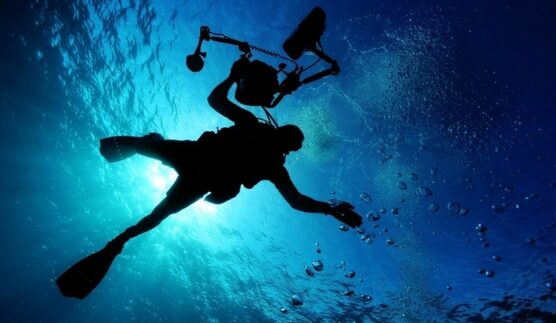
1) Waterproof Housing / Depth Rating
Cameras need to be sealed in underwater housing/casing, in order to be waterproof. Generally, the housing has to be purchased separately and can range in price from under twenty bucks to many hundreds of dollars!
Depth Rating refers to the maximum depth an underwater housing, allows a camera to be waterproof. If you take it beyond this, it may probably break!
2) 4K Film Resolution
4K film resolution is a feature in all of the top diving video waterproof cameras. This means that footage is sharp and has a very high clarity. 4K also helps in editing and post-production. It allows you to slow your footage down, or speed it up, without losing the quality.
3) MP (Megapixels)
A megapixel (mp) is a million pixels; the term not only used for the number of pixels in an image but also for the number of image sensor elements.
The more megapixels a camera has, the more detail it can capture in an image. However, if you squeeze more megapixels into a sensor, it can work less effectively in dim conditions.
Also, whilst a high MP means better still photo quality, it can detract from video quality due to making footage more noisy. Therefore underwater cameras should have a good amount of – but not too many megapixels, if they are mainly to be used for video over photos.
4) FPS (Frames Per Second)
How many video frames the camera captures per second of video. Higher fps = smoother, more lifelike video. However, there’s more to the quality of video than just FPS. Other factors such as lens options and type, video stabilisation and megapixels also have a big impact on this.
Therefore, whilst you might assume that a camera which shoots 4K at 60fps will capture better video than a camera that only shoots 4K at 30fps, although this could be the case but it could also not be if the lower fps camera has a much better lens.
Rest assured that we’ve taken all of these factors into consideration when rating the underwater video cameras reviewed in this article.
5) Video Stabilisation
Movement underwater is inevitable. We like to imagine ourselves moving as gracefully as some kind of mermaid/man through the water. However, footage very rarely will come out that way. Stabilization gives footage a smooth appearance. It helps frames look cinematic as opposed to bumpy and shaky.
Once again video stabilization capacity and quality varies between cameras – and once again, we’ve taken this into account with the final scores we allocated each camera in the reviews section.
6) Zoom
If a camera has a zoom, it can make an object appear closer than it is. However, not all zooms are equal! Digital zoom is pretty useless. It’s basically just a glorified crop – you remove the border of the image and blow it up, but you don’t get extra detail!
By contrast, optical zoom is much better as this is where the physical properties of a lens generally magnify objects and thereby do provide more detail of it in the image.
7) Focus Range
This refers to the closest distance between the lens and an object, that the camera can focus on without blurring. Whereas practically all digital cameras can focus to infinity without blurring, it’s much more tricky to get them to be able to focus on things that are very close to the lens, such as tiny crustaceans or molluscs.
Macro videography is the term used to refer to filming tiny creatures or super close ups underwater of coral or sponge for example and in order to achieve this, you need a camera with a lens that can focus on things as close as about 4″.
A camera with a focus range of infinity to 12″ will blur when anything is held closer to the lens than 12 inches, whereas a camera with a focus range of infinity to 4″ will only blur when subjects are 4 inches or closer to the lens.
Fortunately, even if a camera has a poor focus range (i.e. infinity to 15″), you can often purchase a separate macro lens for that camera, which allows it to focus on things that are much closer to it.
8) Slow Mo
Remember that first time you ever saw a piece of slow mo video as a kid? How you clapped your hands and laughed hysterically at all those contorted facial expressions and low pitched noises, then tried to recreate it yourself?! When we mention slow mo in this article, we’re talking about the same effect!
8X slow mo can slow down the speed of a video by eight times without it appearing juddering, whereas 4X slow mo can only do it by four times.
9) AutoFocus System
Autofocus is important for videoing underwater. You are constantly moving while diving and the camera needs to be able to shift focus easily as you do so.
When you shoot underwater, you are hoping to catch things that often happen in a few seconds. Your camera needs to be able to keep up so that you are not left disappointed.
10) Diving Squad Rating
You can rest assured, that when we’ve given an underwater video camera in this article a rating out of 5 stars, we’ve taken account of all the features described above; their presence or absence, their quality and capacity and how they interact with other features, modes and accessories that the camera has.
We did this both to inform our own decision making in what really are the best underwater video cameras and in which category they belong, such as cheapest, beginners or best all round. And we also did it for you, so you don’t have to!
5 QUICK TIPS for using an Underwater Video Camera
Taking down extra equipment can be overwhelming for beginner divers. However, once you have become comfortable in your dives, it is a worthwhile leap to make. You can use this guide to underwater photography and the list below to master capturing life under the sea.
- Ensure all your settings are correct before your descent.
2. Pay special attention to your white balance setting.
3. Hold the video camera as close to your body as possible for stable footage.
4. Consider using a table mount for added stability.
5. Try and get a variety of shots to make your videos interesting.
Diving Squad Debriefing
Social media has molded an age of documenting and sharing all of our experiences with the world, including that sandwich you ate for lunch. However, far more exciting content can be found and created.
Author Tom Robbins said, “Reality whistles a different tune underwater”. We couldn’t agree more. Discovering life underwater is exhilarating.
Cameras should be chosen with your aim and price point in mind. Our underwater video camera reviews are fully up to date to give you the most enjoyable filming experience.
The tips and tricks will ensure your footage shows the beauty and mystery of life underwater as seen through your eyes. Good luck and happy underwater videography! Don’t forget, we also have a main article on the Best Underwater Cameras.
Support the Squad!
We are part of the Amazon Services LLC Associate Program. If you make a purchase on amazon after clicking a link on Diving Squad, we earn a small commission fee, at no extra cost to yourself.
We are also part of several other affiliate programs so if you click on a Diving Squad affiliate link that results in you booking a liveaboard, booking accommodation, purchasing insurance or buying a product somewhere else, once more we make a small commission, without it costing you a cent extra. Thanks!
